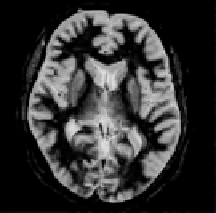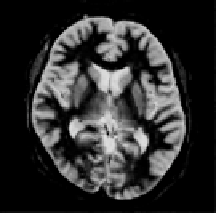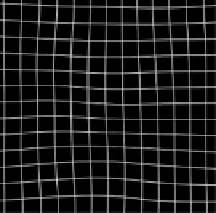Biomedical Engineering Reference
In-Depth Information
(a)
(b)
(c)
Figure 9.15: The superposition of the slices of anatomical MRI images before
the registration (a), after the registration (b), and the resulting deformation field
(c). Quadratic splines were used with knot spacing of
h
=
64. (Color slide.)
Intersubject registration of anatomical (spin-echo) MRI images,
12
Fig. 9.15.
Registration of MRI images from a heart beat sequence,
13
see Fig. 9.16.
The extracted deformation field can be used to extract trajectories of var-
ious points in the heart and to further determine the velocity and derived
parameters, such as the accumulated displacement and strain, which is
important for diagnostic purposes.
Registration of standard 2D ultrasound sequences of the heart [116].
Motion compensation for a sequence of myocardial perfusion MRI im-
ages
14
[117, 118], enabling the time profiles of the intensities at each tissue
point to be reliable calculated (Fig. 9.17). Virtual springs were used in this
case.
Registration of two 3D computer tomography (CT) head volumes,
15
see
Figs. 9.18 and 9.19. We worked on a reduced volume data (128
×
128
×
45
instead of the original 512
×
512
×
45) with control knots placed every
8
×
8
×
8 voxels and the process took about 10 minutes to complete.
16
12
Images courtesy of Arto Nirkko, Inselspital Hospital, Bern, Switzerland.
13
LECB, NIH, http://www-lecb.ncifcrf.gov/flicker/
14
Courtesy of J.-P. Vall ee, Unit e d'imagerie num erique, University Hospital, Geneva,
Switzerland.
15
Images courtesy of Philippe Thvenaz, EPFL, Lausanne, Switzerland. The images were
acquired using the same machine and the same protocol, but not preregistered.
16
On a 700 MHz Pentium based computer. Registering directly the undecimated volumes
on the same computer takes about three hours with very minor increase in quality as relatively
smooth deformations are sought. We are currently working on a optimized reimplementation
of the algorithm that should reduce these times considerably.



